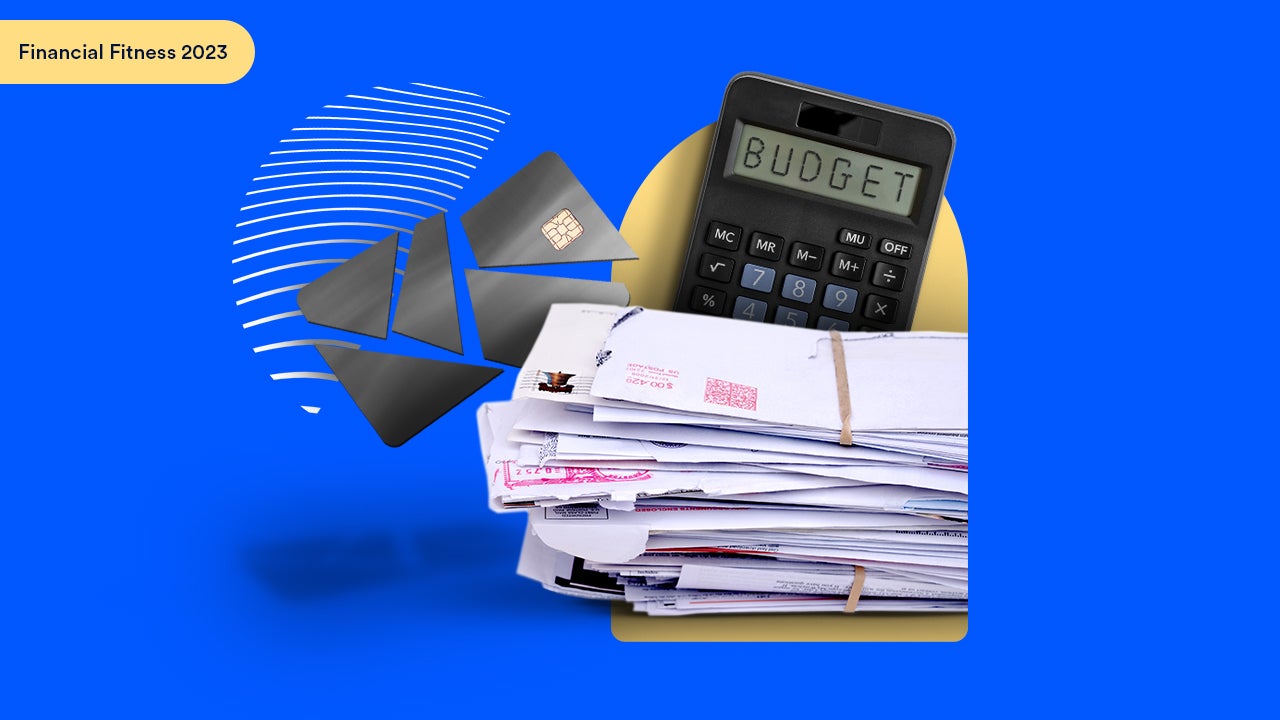9 bank accounts with built-in budgeting tools to help track your personal finances




Key takeaways
- Built-in budgeting tools help automatically track and categorize spending without needing separate budgeting apps.
- Ally Bank’s “buckets” feature allows both spending categorization and savings goal tracking within one platform.
- Capital One’s Eno virtual assistant can identify recurring charges and subscription fees to help eliminate unnecessary expenses.
- Most major banks now offer some form of automated expense tracking, making budgeting more accessible than ever.
Technology is becoming more integrated into daily life, and mobile banking apps are proof of that. Your bank’s app may offer advanced personal finance hubs, providing insights into spending habits, tracking savings progress, and even creating budgets automatically.
Unlike older systems of manually tracking expenses, innovative budgeting tools can automatically categorize your spending and offer real-time updates. Here are the best bank accounts offering the most advanced built-in budgeting tools to help you take control of your personal finances.
The best banks for budgeting
Ally Bank

- User-friendly bucket system makes tracking intuitive
- Combines spending tracking with savings goal management
- Automatic categorization reduces manual entry
- Suggestions help identify additional saving opportunities

- Bucket customization could be more robust
- No advanced investment tracking integration
Who it’s best for: Savers who want to organize finances into specific categories and goals while earning competitive rates on both checking and savings accounts.
Ally Bank, renowned for its prowess in online banking, takes personal finance to the next level with tools that track your spending and saving. The bank calls these tools “buckets,” which are essentially customizable categories that help you organize your money by purpose.
For spending buckets, which come with Ally’s checking account, you can create categories such as “groceries” or “entertainment,” and the bank’s app will automatically categorize expenses as they come in. You can also assign certain businesses to each type of bucket to make tracking more accurate.
With an Ally Savings account, customers can set up savings buckets to set and track savings goals, set up recurring transfers, and get suggestions on areas to save more money.
Learn more about Ally’s bank accounts →
Bank of America

- Excellent visual representation of spending patterns
- Easy-to-understand charts highlight budget variances
- Combines digital tools with extensive branch network
- Comprehensive mobile app functionality

- May require maintaining higher balances to avoid fees
- Less advanced than some online-only competitors
- Limited automation compared to newer fintech options
Who it’s best for: Users who value branch access alongside digital budgeting tools and prefer visual chart-based budget tracking.
With both a large physical and digital presence, Bank of America offers easy accessibility, and its budgeting tools make it straightforward to track your personal finances. The bank’s mobile app breaks down your spending into interactive charts, highlighting spending trends and areas where you might be under or over budget.
The platform shows your total spending for the month, broken down into incoming and outgoing cash flows with customizable budget categories, making it easy to see exactly where your money is going each month.
Learn more about Bank of America’s bank accounts →
Capital One

- Advanced virtual assistant provides real-time insights
- Excellent at identifying hidden recurring charges
- Helps eliminate unnecessary subscription costs
- Text-based queries make budgeting convenient

- Limited savings goal tracking features
- Fewer visual budgeting components
- Virtual assistant requires learning curve for some users
Who it’s best for: Tech-savvy users who want to identify and eliminate unnecessary recurring expenses while getting instant budget updates via text or app.
Capital One has been at the forefront of financial innovation, and its automated budgeting tools are proof of that. The tools available with its 360 Checking account allow customers to effortlessly monitor their spending through automatic tracking and categorizing of expenses.
With Eno — the bank’s built-in virtual assistant — you can simply ask for a list of your recent transactions or an update on your savings progress through the app or by text message. Another unique feature is Eno’s ability to identify recurring charges, such as subscription fees you might not have been aware of, and alert you when these fees increase or when free trials are about to end.
Learn more about Capital One’s bank accounts →
Chase

- Comprehensive budgeting tools in one convenient tab
- Clear visual breakdown of spending habits
- Works with any Chase checking account or credit card
- Extensive branch network for support

- May require Chase products to access full features
- Less automated categorization than some competitors
- Limited integration with external accounts
Who it’s best for: Chase customers who want holistic budgeting tools with visual insights and prefer having everything in one banking relationship.
Chase’s mobile app comes with an entire tab dedicated to your budget. On this tab, users can set their budget category limits, track expenses, and get a visual breakdown of their spending from month to month. With Snapshot, users get insights into their spending trends and patterns.
Chase’s built-in budgeting tools come with any of its checking accounts or a Chase credit card, making it accessible to most Chase customers who want to better track their financial habits.
Learn more about Chase’s bank accounts →
Current

- Strong budgeting tools for a digital-first platform
- Helpful spending alerts without transaction blocking
- User-friendly category customization
- No traditional banking fees structure

- Not a traditional bank (may limit some services)
- Fewer physical locations for support
- Less comprehensive than full-service banks
Who it’s best for: Users seeking alternative banking with robust budgeting features who don’t need extensive traditional banking services.
While Current might not be a traditional bank, its powerful budgeting tools make it a strong candidate for those interested in alternative banking options. In the Current app, users can access a tab called Insights, which offers expense tracking and customizable budgeting categories.
Users can assign a goal amount for each category or choose a suggested amount from the tool. When they’re close to the limit for a particular spending category, users get a mobile alert, though the transaction won’t be declined.
Huntington National Bank

- Spend Analysis for expense categorization
- Spend Setter for budget limits
- Huntington Heads Up alert system
- Look Ahead Calendar for upcoming payments

- May be overwhelming for simple budgeting needs
- Regional bank with limited geographic coverage
- Multiple tools may require learning curve
Who it’s best for: Users who want budgeting tools with predictive features and don’t mind managing multiple integrated systems.
With one of Huntington Bank’s checking accounts, customers get numerous in-app budgeting tools. Spend Analysis organizes expenses into preset categories, while Spend Setter allows customers to set spending limits for budget categories. Huntington Heads Up sends alert-style updates on category spending.
The standout feature is Look Ahead Calendar, which shows upcoming payments and bill due dates in a visually appealing calendar format, taking predictive financial planning beyond basic alerts.
Learn more about Huntington National Bank’s accounts →
Regions Bank

- Comprehensive view including external accounts
- Desktop and mobile access
- Personalized spending reduction suggestions
- Good memo and tracking features

- Regional availability may be limited
- Interface may feel less modern than competitors
- Fewer advanced automation features
Who it’s best for: Users who want to consolidate all financial accounts into one budgeting dashboard and prefer traditional banking with digital enhancements.
Regions Bank offers a suite of budgeting tools through My GreenInsights, accessible on both mobile app and desktop. Beyond basic expense tracking, the platform allows customers to add memos to transactions, set spending targets, and receive suggestions for reducing expenses.
The ability to link external accounts provides a comprehensive view of finances, making it easier to manage budgets across multiple institutions.
Learn more about Region Bank’s accounts →
SoFi

- Holistic financial view across all account types
- Strong integration of banking and investment products
- Comprehensive external account linking
- Modern, user-friendly interface

- Limited physical presence for support
- May be overwhelming for users wanting simple budgeting
- Focus on higher-income users
Who it’s best for: Users with multiple financial products who want a comprehensive dashboard covering banking, investing, and loan management in one place.
SoFi offers budgeting insights that integrate data from numerous linked accounts, including checking accounts, savings, credit cards, student loans, and mortgages. You can link external accounts for a complete financial overview each month.
SoFi’s budgeting tools include expense tracking, spending charts, and alerts for upcoming bills, making it particularly valuable for users with diverse financial products.
Learn more about SoFi’s bank accounts →
Wells Fargo

- Comprehensive budgeting package with multiple tools
- Excellent visual analysis and reporting
- Automatic expense tracking and categorization
- Large branch network for support

- May require Wells Fargo relationship for full access
- Some tools may feel dated compared to fintech competitors
- Past customer service issues may concern some users
Who it’s best for: Users who want budgeting tools from an established bank with extensive branch access and don’t mind working within one banking ecosystem.
Wells Fargo brings several budgeting tools together in a package called My Money Map. These tools include spending reports, personalized budget creation, spending goals, and savings goal monitoring.
When you create a budget, the tool automatically tracks and categorizes expenses while providing visual analysis through bar graphs that highlight how actual spending compares to budget limits.
Learn more about Wells Fargo’s bank accounts →
Bottom line
Built-in budgeting tools have made personal finance management more accessible than ever. These automated systems can enhance your ability to track and control spending without requiring separate apps or manual entry.
When choosing a bank account with budgeting tools, consider your specific needs: Do you prefer visual charts, goal-based savings buckets, or comprehensive account integration? Also factor in other important considerations like fees, branch access and overall banking services.
The key to successful budgeting is consistency, so choose tools you’ll actually use. Having everything integrated into your bank’s app makes it more likely you’ll stick with your budgeting routine and achieve your financial goals.
Ready to start budgeting more effectively?
FAQs
Why we ask for feedback Your feedback helps us improve our content and services. It takes less than a minute to complete.
Your responses are anonymous and will only be used for improving our website.




